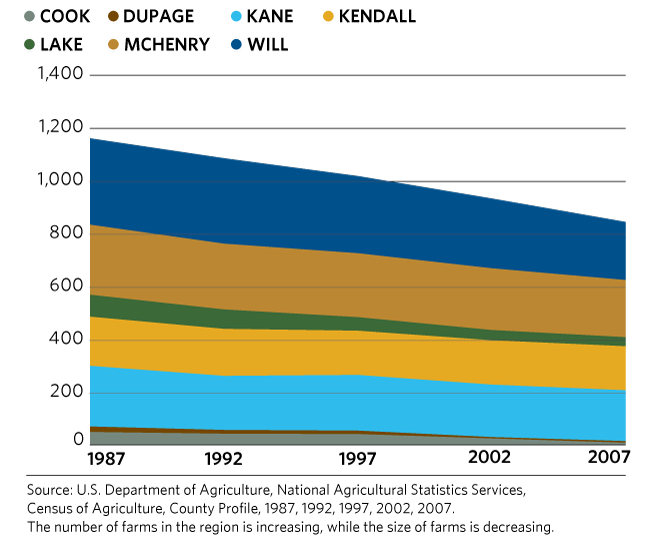Local Food Current Conditions
Local food systems today
The amount of agricultural land and the size of farms in northeastern Illinois are shrinking, but the number of smaller farming operations is on the rise. This parallels national trends toward local food production, driven in part by the growing number of restaurants and chefs who pride themselves on using fresh, locally grown ingredients. Local and national supermarkets have also begun sourcing food locally.
Offering fresh, locally grown produce gives these businesses a competitive advantage and has helped create market demand for food that is grown and processed here by our own neighbors. The significant growth in the number of farmers' markets, Community Supported Agriculture networks (weekly shares of a farm's harvest), and the use of Supplemental Nutrition Assistance Program (SNAP) benefits (formerly known as food stamps) at farmers' markets is further evidence that the market is responding to consumer demand for locally-sourced products. This generates and circulates money within our region and state, rather than sending it elsewhere.
Learn more about current trends by clicking on the chart titles below.
-
Number of state legislative bills focusing on local foods in U.S., 2004-09
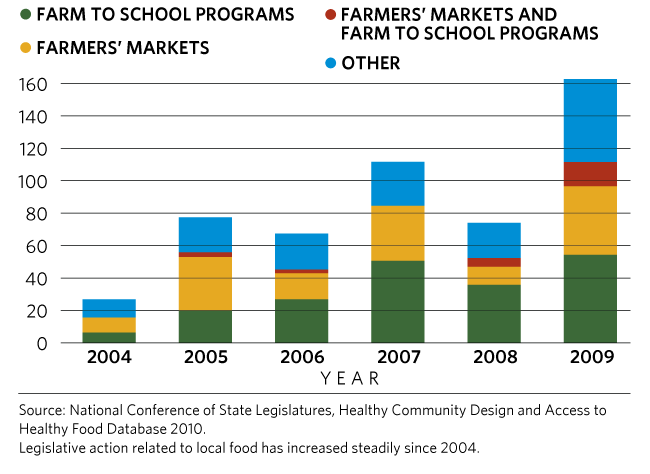
-
Number of farmers' markets in Illinois, 1999-2011
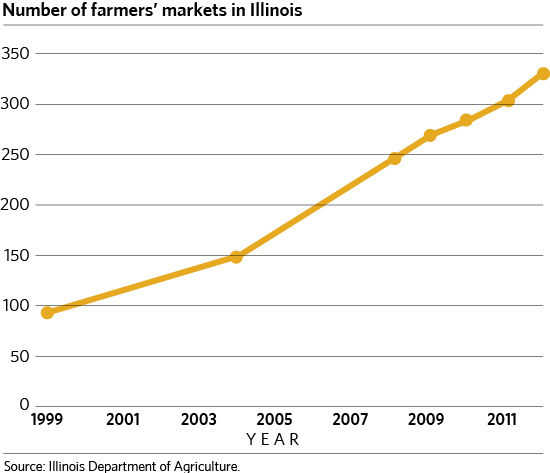
-
Growth in number of Farm to School programs in U.S., 1996-2005

-
Market value of agricultural productions sold directly to individuals for human consumption in northeastern Illinois, by county, in thousands of dollars, 1997-2007
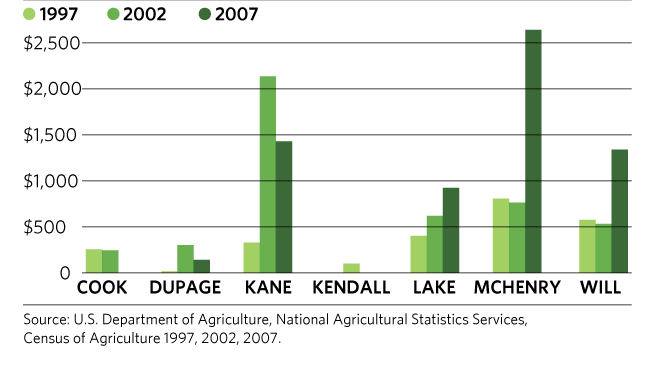
-
Number of farms in northeastern Illinois, by county, 1987-2007
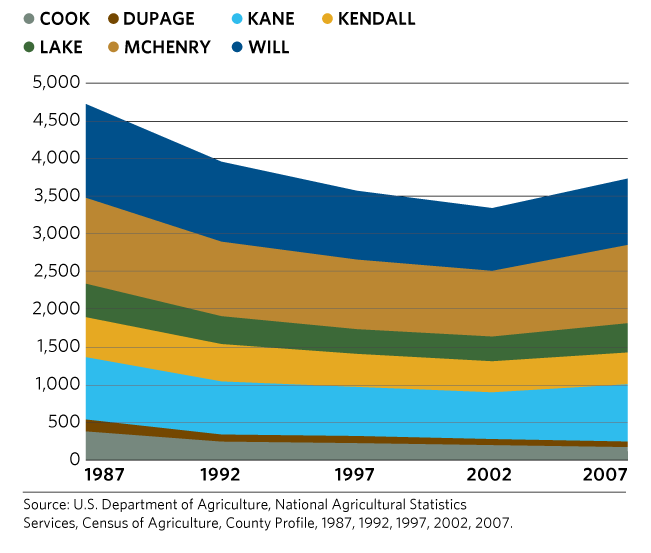
-
Farmland in northeastern Illinois, by county, in thousands of acres, 1987-2007
